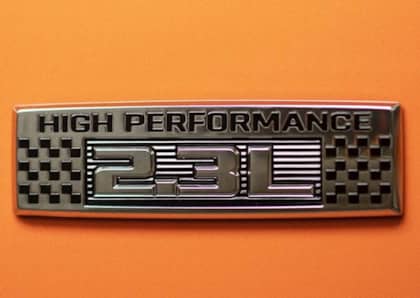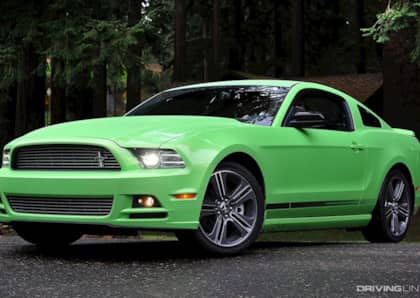Chelsea Denofa's Ecoboost-swapped Fox Body Mustang turns laps more than heads
Chelsea Denofa has been drifting competitively for nearly 15 years now. Over the course of his career, he has driven multiple chassis from multiple manufacturers, spanning the Formula Drift, XDC, and NOPI Drift series. At any given time, Denofa has anywhere from three to seven drift cars in his stable that are ready to drift. However, Denofa noticed a fatal flaw in how many grassroots drivers build drift cars with too much power and too much grip, which makes seat time very expensive due to the cost of consumables, particularly tires. Enter his Ecoboost-swapped Fox Body Mustang.

When Denofa set out to build this Ford Mustang, he had a clear concept in mind. He wanted to find a lightweight and affordable chassis that he could turn into a “seat time” car – one that worked consistently and allowed him to get as much seat time as possible, but was realatively affordable to operate. Due in part with his partnership with the Ford Mustang RTR drift team, Denofa wanted to see if he could build a car from the blue oval brand that fulfilled his needs.

After some searching on Facebook Marketplace, Denofa found this 1992 Ford Mustang notchback chassis that had previously been used as a drag car. Denofa knew he wasn’t interested in the supercharged Coyote V8 engine or the drag racing suspension, so he negotiated for the seller to keep those parts to help reduce the cost of the shell. Fast forward a few months later, and this Fox Body was ready to drift. But let’s not get too far ahead of ourselves…
Ecoboost Heart Transplant
The first step in the transformation was sourcing and fitting the engine package. Denofa found a 2017 Ford Mustang 2.3L Ecoboost engine in a local wrecking yard, which he was able to secure for around $2,500. He knew he would need to fabricate some engine and transmission mounts into the Fox Body engine bay, but from all the research he had done, it felt like this engine would give him the best balance of power while keeping the lightweight theme.
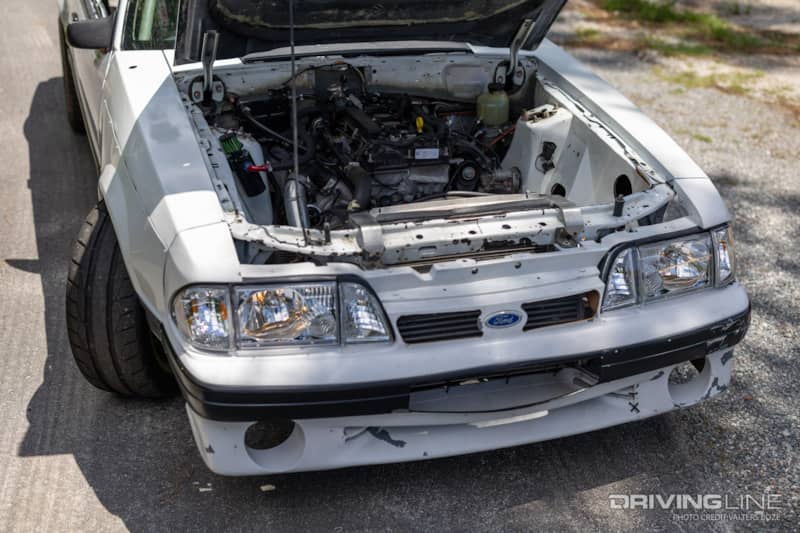
With Denofa’s extensive experience (and spare parts) related to BMW E36 and E46 chassis, he decided to use a BMW ZF320 5-speed transmission, which came in several late '90s and early 2000 BMW chassis. Of course, Denofa had one in his shop that he could use as a mockup, and after sourcing a GENsport adaptor plate, it turned out to be a perfect fit! Before mating the transmission to the engine, he swapped out the clutch with a Comp Clutch 6-puck clutch and a Gemsport flywheel just to refresh the setup and ensure it would hold the expected power it would put out.
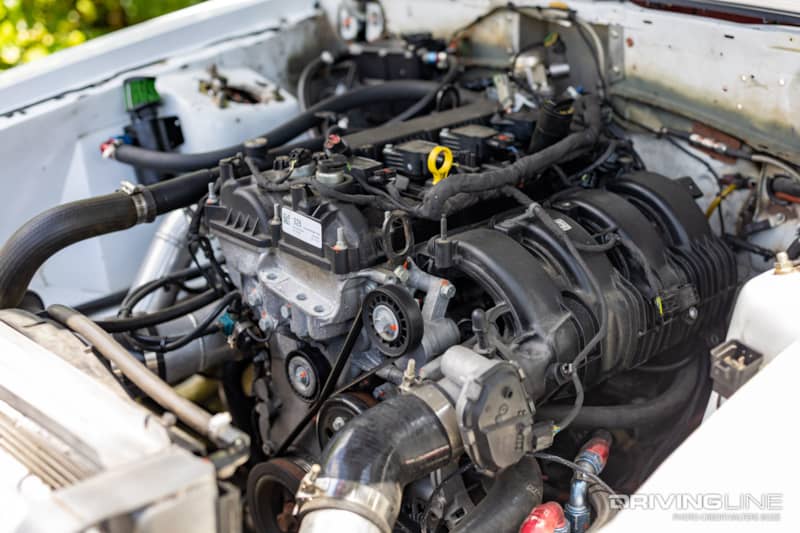
Denofa knew he wouldn’t be happy with just using the stock 310hp output from the Ecoboost engine. The first upgrade would come via a Precision Turbo N2 ball bearing turbo, which is a bolt-on replacement for the stock unit. The stock intercooler was also replaced with a Vibrant Performance intercooler and custom charge piping, with exhaust gases being pushed out via a custom fabricated MGRP 3.5” exhaust. With an unknown amount of wear on the OEM spark plugs and O2 sensors, Denofa decided to replace those as well with NGK units to ensure tuning would go smoothly. Denofa also replaced the engine air filter with a K&N unit, and upgraded the oil to Pennzoil 10W60 synthetic oil and a K&N oil filter prior to firing the engine up for the first time.
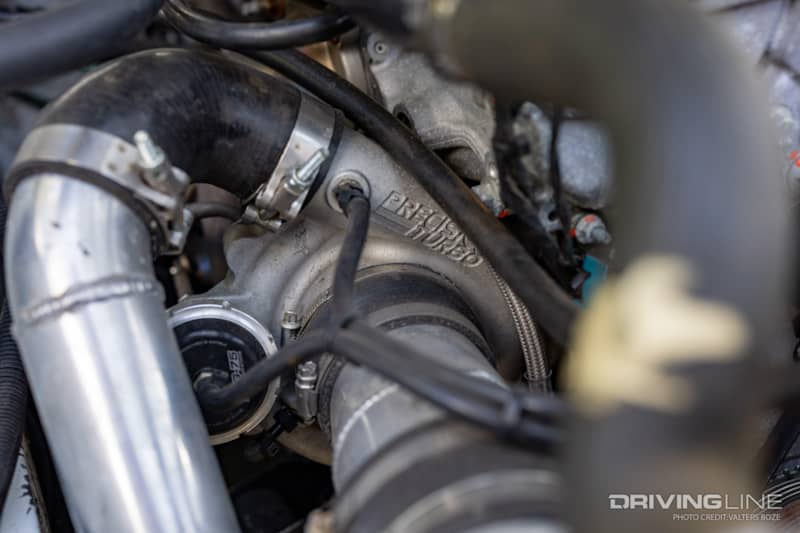
Fuel and Wiring
Combustion requires fuel, air, and spark in an internal combustion engine. An upgraded turbocharger means upgrading other systems as well, including the fuel and oil system. Denofa started by replacing the stock fuel tank with a 10 gallon Radium tank, which allowed him to put the tank and subsequent fuel exactly where he wanted that weight in the chassis. Fuel is transferred from the tank via a NOSTRUM upgraded fuel pump and upgraded NOSTRUM Direct Injection injectors. These direct injection engines use a very high fuel pressure, often exceeding 3,500 PSI.
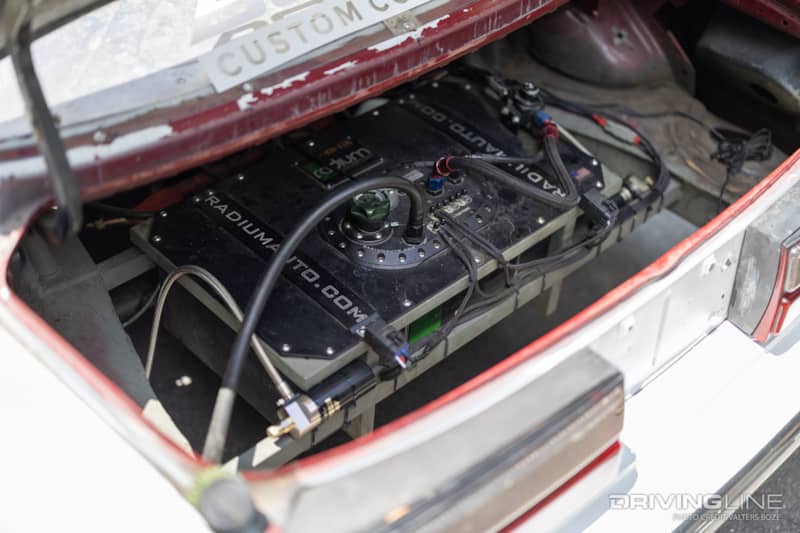
Anytime you swap an engine into a new chassis, you’re likely going to need to replace and/or upgrade the stock engine control unit. Knowing nearly none of the original electronics in the chassis were necessary, Denofa made the decision to go with an aftermarket solution and used the Link Force GDI ECU, which is specifically designed for 4-cylinder direct injection engines like the 2.3L Ecoboost. All wiring was handled by Panic Made wiring harness, which also allowed for all non-essential wires to be removed from the loom, which also reduces unnecessary weight. Since the decision was already made to go with an aftermarket ECU, swapping to a digital dash was a natural next step, and the Link ECU digital dash was selected to replace the stock gauges on the dash to monitor the vital signs of the engine.
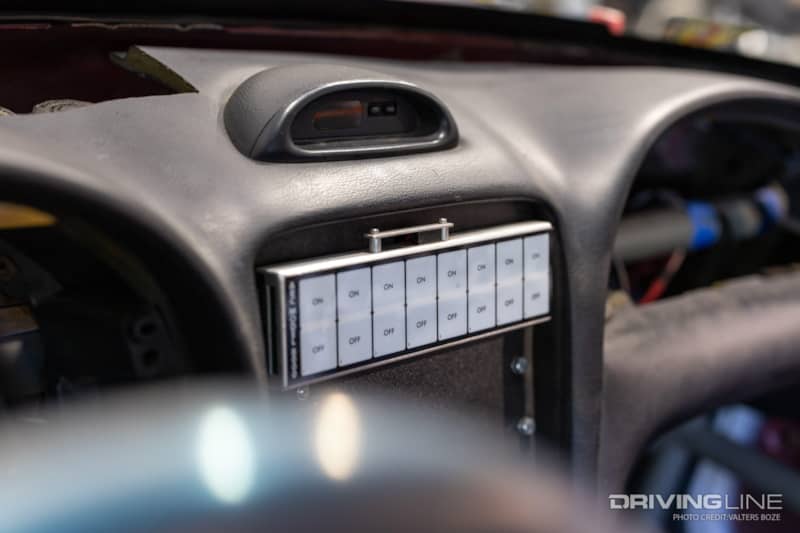
After some dyno tuning, the engine setup now puts out around 400hp and 450 lb-ft of torque, which is enough to keep the tires spinning in most conditions without creating excessive wheelspeed — which just burns up tires.
Drivetrain, Suspension, and Steering
After fitting the Engine and Transmission up the E46 5-speed driveshaft would fit perfectly. The stock Fox Body 8.8” solid axle setup was kept out back, using 35 spline Strange Axles, a billet Strange spool, and 9” weld on rear ends to ensure a bulletproof rear end that was perfect for plenty of clutch kicks. Denofa has a long standing relationship with BC Racing, and this build would utilize the 2-way adjustable ER series coilovers on each corner.
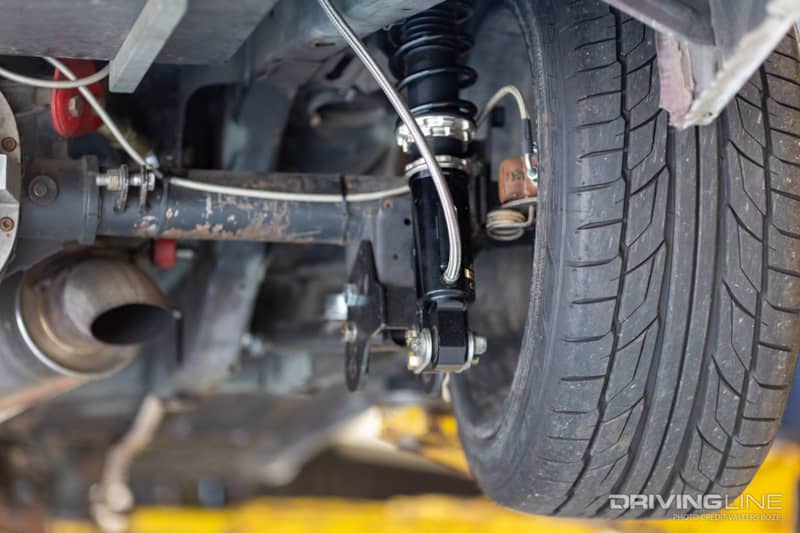
As with most drift cars, the steering setup also got an upgrade, using modified 2003 Mustang Cobra knuckles and a Scotty D steering kit to maximize the slip angle. Continuing the lightweight theme, the stock brakes were replaced with Wilwoods that were originally intended for drag racing. The brakes are setup in a somewhat unconventional “suicide” setup, where the front brakes are controlled by the brake pedal while the rear brakes are tied to the hydraulic handbrake.
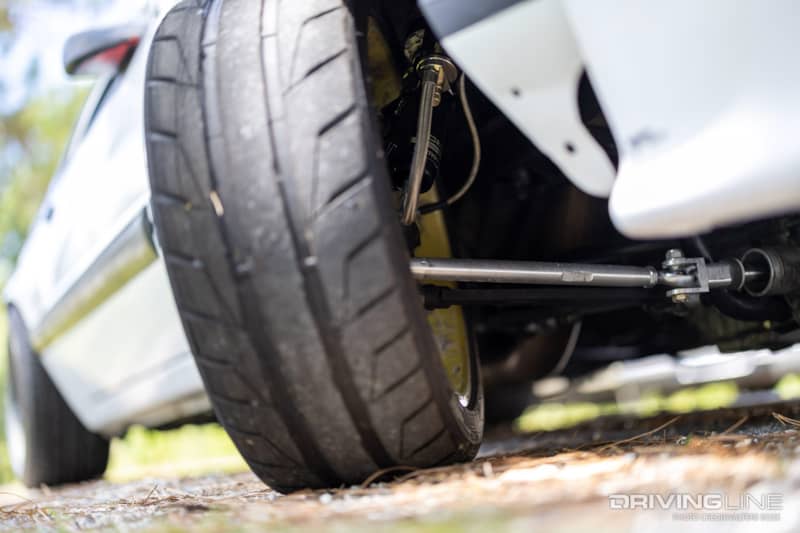
The point of contact between the car and the pavement is the wheel and tire package, and Denofa went with a tried and true configuration. Up front, Denofa uses 17x8” Regamaster Promada wheels in a +25 offset wrapped in sticky 235/40/17 Nitto NT05 tires. Out back, Denofa has multiple sets of 17x10” Regamaster Promada wheels in +20 offset wrapped in Nitto NT555 G2 tires. This setup gives Denofa enough traction to put the Notchback Mustang in the right places, yet keep tire wear manageable.
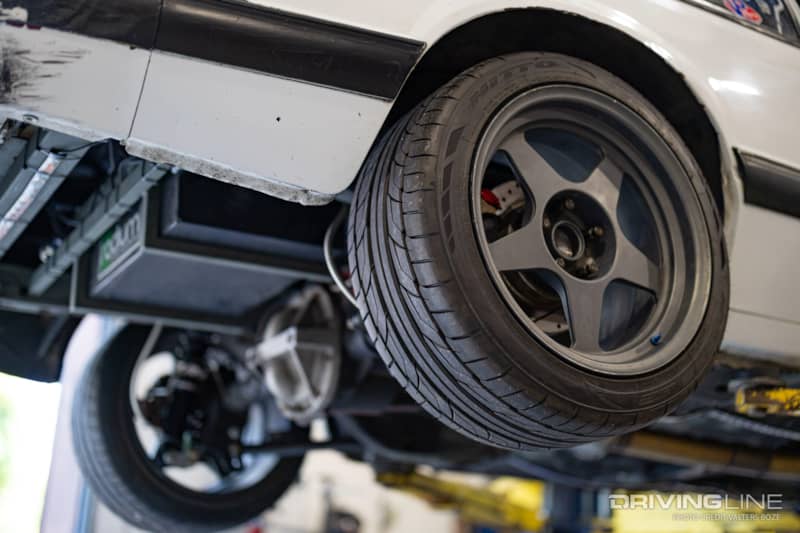
Lightweight = Right Weight
Most drift cars are built with a focus on both total weight and weight distribution, but Denofa took this concept to the extreme. Everything that wasn’t needed was removed, and although the chassis was already stripped for drag racing, Denofa continued that theme almost to an extreme. A cowl-less fiberglass hood and fiberglass trunk replaced the steel components, with a Lexan rear window replacing the heavier OEM glass.
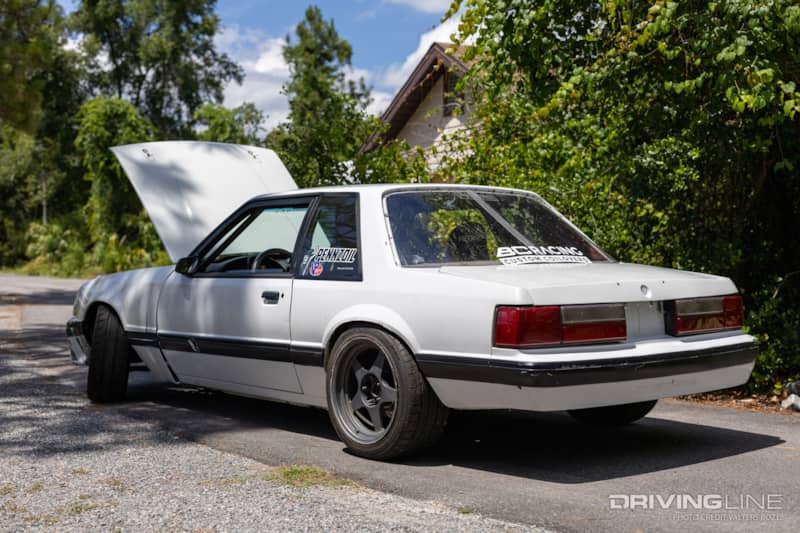
Inside the car, lighter weight Recaro Pole Position seats are paired with 5-point harnesses to keep both the driver and passenger safe, and a full FD-legal roll cage was added to prevent intrusion into the passenger cabin in a worst-case scenario. Otherwise, all other seating, carpeting, and creature comforts were stripped from the interior. The result is a chassis that weighs just over 2,300 lbs fully dressed and with all fluids.
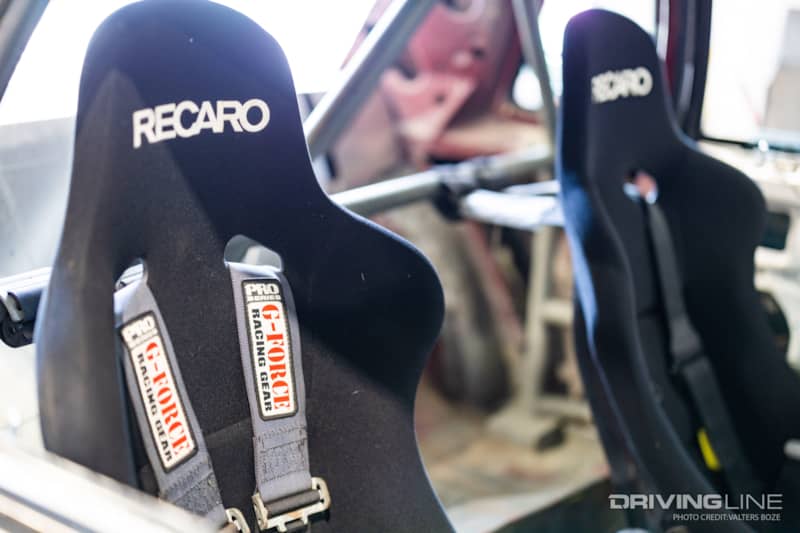
Since finishing the build, Denofa has taken this vehicle to a number of competitions and is routinely the lowest power vehicle on the grid, but is able to keep up with higher horsepower cars due to the careful emphasis on less weight. Additionally, a typical drift weekend only consumes 2 or 3 sets of tires and a tank or two of gas, keeping Denofa’s costs down compared to other cars that are burning a set of tires every 2 to 4 laps. While this Mustang is a bit different from what is typically seen at drifting events, it could be considered a roadmap for those looking for a relatively cheap to operate drift car that is competitive and easy to maintain.

Hard Facts: Chelsea Denofa’s 1992 Ford Mustang notchback
|
Owner |
Chelsea Denofa |
|
Hometown: |
Philadelphia, Pennsylvania |
|
Current Residence: |
Orlando, Florida |
| Engine: | 2017 Ford Mustang 2.3L Ecoboost, BMW ZF350 5-speed transmission Custom fabricated Engine and Transmission mounts, GENsport transmission adaptor plate, Precision Turbo NX2 bolt-on replacement, Vibrant Intercooler core w/ custom endtanks, Pennzoil 10w60 Synthetic, K&N air filter & oil filter, NGK Plugs & 02 sensors, MGRP 3.5” Exhaust, OUTPUT: ~400 HP / 450 lb-ft Torque |
| Fueling / Engine Control: | NOSTRUM fuel pump & Direct Injection Injectors, VP MS100 Gas, Radium 10 gallon fuel cell, Radium coolant tank, Radium catch can, Link ECU Force GDI, Panic engine harness, Link ECU Dash |
| Drivetrain: | Comp Clutch 6-puck clutch, Gemsport flywheel, Stock Doorman E46 manual driveshaft, Standard Fox Body 8.8” solid axle, 35 spline Strange axles, Billet Strange spool, 9” weld-on ends |
| Suspension & Steering: | BC Racing ER series 2-way adjustable, 2003 Ford Mustang cobra knuckles, Wilwood drag brakes – “Suicide” setup, Scotty D steering kit, Custom tubular k-member |
| Wheels & Tires: | 17”x8 Regamaster Promada wheels, ET +25 Front, 17”x10 Regamaster Promada wheels, ET +20 Rear, 235/40/17 Nitto NT05 tires front, 275/40/18 Nitto NT555 G2 tires rear |
| Exterior: | Ford Mustang GT front bumper, Fiberglass non-COWL hood, Fiberglass trunk, Lexan rear window, Clear Projector headlights |
| Interior: | Custom roll cage (FD Legal), Recaro Pole Position Seats, 5-point seat belt harnesses |




